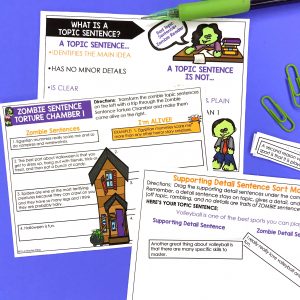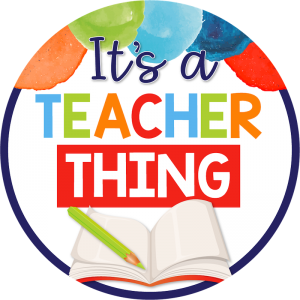Teaching basic paragraph writing to kids can be challenging. Knowing the most common mistakes kids make will help you address issues up front, thus minimizing their occurrence.
6 of the most common mistakes kids make when writing a paragraph include:
1. Losing focus in the paragraph
Students will forget the main topic of the paragraph and start to include irrelevant information that doesn’t fit in with the topic sentence. Often, students will start to remember other things about their topic, and they won’t realize that adding this information will veer the paragraph off topic and ultimately confuse the reader.
The writer’s memories do not translate into a paragraph. In the writer’s mind, the information makes sense because the student may have lived the event. Just because it makes sense in the writer’s head does not mean it makes sense in the context of writing. One solution to this issue may be to remind students that a paragraph is focused on just one topic.
Narrowing that topic is helpful in maintaining focus. For example, a topic like “My Favorite Vacations” is really too broad for just one paragraph. Instead, pick just one vacation and target only 3 things that made it that vacation amazing. A paragraph is a paragraph, not a full story.
2. Forgetting to include an example
Student may forget to include an example of the detail. The example is the convincing support. Just saying something isn’t enough. Examples are evidence, and evidence is key. A possible solution for this is to create a paragraph frame and label each section so that all sentences must be included.
I like to label each sentence shape as follows: TS, D1, Ex.1, D2, Ex. 2, D3, Ex. 3, CS. (TS=Topic Sentence; D1-3=Detail Sentences; Ex. 1-3=the examples for each detail.) As writers improve, you may not need to separate the example from the detail, but for students who’ve struggled or need review, this structure is invaluable. If you’ve provided a writing area for each component, it can’t be neglected.
3. Problems with transition words during paragraph writing
If students don’t understand that transitional words and phrases often indicate time or have a specific purpose, they may add these words in the wrong areas of a paragraph. Remind students that transition words help the reader understand where they are in experiencing the topic or event. Transition words have a time or meaning associated with them, as in “As you can see…” This is a summary phrase, not one that is used to add information. Teach an explicit lesson on transition words and phrases, and provide a list of words categorized by purpose. Find one here in this unit.

4. Concluding sentence confusion
Some students may veer their concluding sentence away from the topic sentence. This confuses the reader. Remind the writer that keeping their writing clear for the reader is the primary goal. The concluding sentence says the same thing as the topic sentence, it just uses different words.
A solution: have students write their topic and concluding sentence before writing the body of the paragraph. This may help them remember that each sentence proves the topic sentence is true.
5. Indenting more than once during paragraph writing
Students will often try to indent every sentence of a paragraph. This may be the result of the practice writing frame, if you use one. Give consistent reminders that there’s only one indentation per paragraph. If you are using a paragraph frame (graphic organizer), be clear that this practice page is for practicing just one paragraph for the entire frame.
A solution may be that when it comes time to write a final draft, as a class have students mark the one spot on their page where they’ll indent. In fact, you may even have students write the first word of the paragraph there and then specify that there will be no other indentations unless there’s a second paragraph that starts on the line below the concluding sentence.
6. Adding too much information when writing a paragraph
Students may forget that a paragraph is meant to be short and concise. It’s generally meant to get to the point. Limiting the number of sentences should help focus student writing. If a student writes too much, let them know that more is not better. The goal is to maintain the focus of the topic sentence. A paragraph is not a complete story. Remember that 8 sentences is pretty much the maximum. Providing a paragraph frame with a shape for each sentence may help with this issue. Only one sentence per shape.
One final point: Using mentor sentences is a great way to explicitly show students what topic sentences, details sentences, examples, and concluding sentences look like. Have mentor sentences ready to go before teaching basic paragraphing.
I love using this unit that I created when I realized my students needed more support with paragraph writing.

It includes anchor charts and mini-units that teaches how to write each type of sentence. I’ve also included my favorite paragraph frame and two topics to get you started. It’s both digital and printable, with over 180 pages–everything you’ll need! AND it’s ZOMBIE-themed!
Pin this blog post for later reference.

Happy Teaching!


Leave a Reply